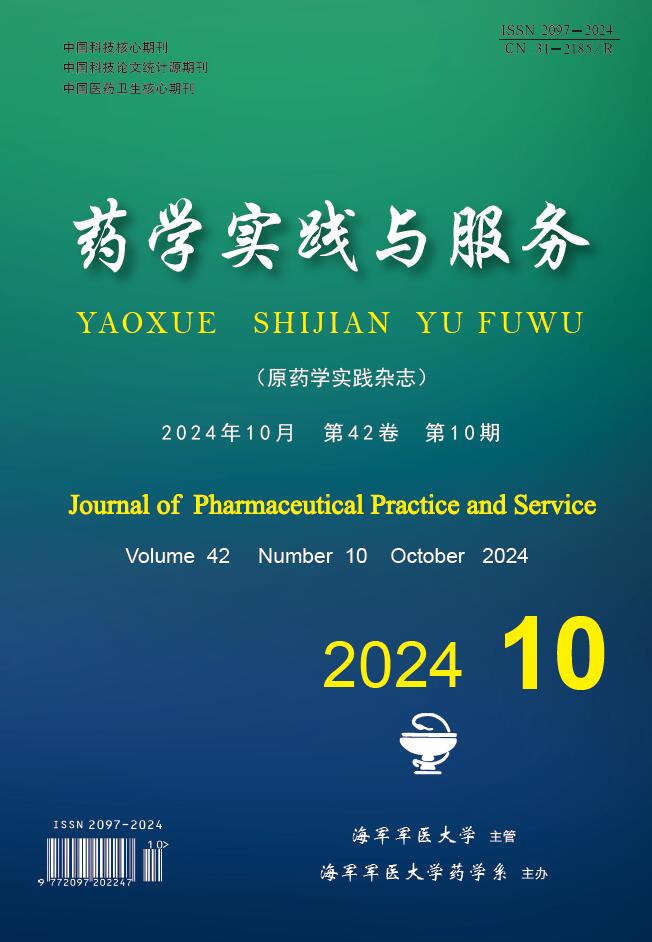-
代谢相关脂肪性肝病(MASLD)是世界范围内慢性肝病最常见的病因,涵盖了脂肪性肝病的整个谱系。从早期的脂肪变性进展为有损伤和炎症的代谢性脂肪性肝炎(MASH),伴或不伴纤维化,最终都可以发展为肝硬化和肝细胞癌。截止到2021年,全球MASLD的总体患病率已经达到32.4%,目前仍在持续上升[1]。MASLD的发展不仅与肥胖和2型糖尿病(T2DM)密切相关,与肝细胞癌、胰腺癌和子宫癌等癌症的风险增加也相关[2]。
最初人们认为脂肪性肝炎的发展是一种“双重打击”现象。脂肪变性是第一重“打击”,第二重是能够诱导氧化应激的自由基的来源[3]。目前大多数学者认为,可能同时存在胰岛素抵抗、脂肪组织分泌激素、肠道微生物群、营养因素以及遗传和表观遗传因素等多重打击,共同促进肝脏炎症的发生。此外,炎症不总是发生在脂肪变性之后,也可能会导致脂肪变性的发生[4]。
肝活检是诊断MASLD的金标准,但高成本、取样偏倚、不可重复等缺点限制了肝活检在临床的广泛应用。目前尚无美国FDA批准的用于治疗MASLD的药物。本文比较了无创诊断标记物诊断MASLD的准确度,也对当前的药物治疗研究展开了讨论。
-
细胞角蛋白18 (CK-18)是细胞凋亡的标志物,在细胞凋亡途径中被半胱天冬酶切割。MASH患者血清明显升高的CK-18使其成为区分单纯脂肪变性和MASH的候选生物标记物。CK-18-M30片段(CK18-M30)和CK-18-M65片段(CK18-M65)诊断MASH的准确性为0.75和0.82,CK18-M65的诊断准确性更高[5]。然而,单独使用CK-18不能很好的区分单纯脂肪变性和MASH,将CK18-M30、成纤维细胞生长因子2、白细胞介素1受体拮抗剂、上皮衍生因子和骨保护素联合使用,能够显著提高MASH的诊断准确性[6]。Cao等[7]建立了预测MASH的新模型,将谷丙转氨酶(ALT)、血小板、CK-18和甘油三酯(TG)结合起来,诊断准确性为0.92。
巨噬细胞来源的凝集素样蛋白2结合蛋白(Mac-2BP)是胆汁分泌的糖蛋白之一,诊断MASH患者的准确性为0.816[8]。Mac-2BP会随着肝脏炎症和纤维化进展而升高,是MASH诊断和MASLD患者纤维化分期预测的生物标志物。岩藻糖基化触珠蛋白和Mac-2BP可以分别预测肝细胞球囊化和纤维化,它们构建的逻辑回归模型诊断MASH的准确性为0.85[9]。Mac-2BP糖基化异构体(M2BPGi)和纤维化4指数(FIB-4)联合使用能够弥补各自在预测MASH时的弱点,具有较高的阳性预测值[10]。
ALT反应被定义为ALT较基线降低30%以上或ALT水平低于40 IU/L,反映了组织学改善。有报道称,ALT反应是MASLD活动性评分减少或纤维化消退的最佳预测指标,但25%的单纯脂肪变性患者和19%的MASH患者血清ALT水平处于正常范围[11],这些患者与ALT水平升高的单纯脂肪变性患者组织学谱无显著差异[12]。因此,单独使用ALT不是诊断MASLD或区分单纯脂肪变性和MASH的理想生物标志物。尽管如此,ALT水平正常的单纯脂肪变性患者患MASH和晚期纤维化的风险较低[13]。表1是目前研究较多的与MASH诊断相关的生物标志物和评分系统。
标记物名称 准确性 敏感性(%) 特异性(%) 研究人群 CK18-M30 0.75 5 815名MASLD患者[5] CK18-M65 0.82 5 815名MASLD患者[5] ALT、血小板、CK-18和TG 0.92 89.0 86.0 139名MASLD患者+51名健康成年[7] Mac-2BP 0.82 127名MASLD患者[8] 岩藻糖基化触珠蛋白和Mac-2BP 0.85 81.1 79.3 124名MASLD患者[9] ALT、种族和基线低密度脂蛋白 0.91 95.0 82.0 146名MASLD患者[14] ALT、天冬氨酸氨基转移酶和脂蛋白A 0.83 86名MASLD患者[15] III型前胶原N端肽 0.85-0.87 172名MASLD患者[16] MASH评分 0.79 77.4 70.7 318名因疑似MASLD接受肝活检的受试者[17] MASH ClinLipMet 评分 0.87 85.5 72.1 318名因疑似MASLD接受肝活检的受试者[17] -
FIB-4评分、天门冬氨酸氨基转移酶与血小板计数比值指数(APRI)评分、MASLD纤维化(NFS)评分和BARD评分是几种区分晚期纤维化的简单评分系统,诊断MASLD患者纤维化的准确性分别为0.84、0.77、0.76和0.84。FIB-4评分和NFS可能是检测晚期纤维化的最佳预测指标[18],临床上可以用来排除MASLD患者晚期纤维化。FIB-4和APRI评分在成人MASLD患者纤维化诊断中具有较高的阳性预测值,能够减少肝活检的筛查次数[19]。M2BPGi与FIB-4评分联合使用可以排除肝纤维化以外的疾病导致的血小板计数减少和谷草转氨酶(AST)水平升高,这些参数会使FIB-4指数预测失效[10]。
尽管如此,FIB-4评分和NFS对超过65岁的患者晚期纤维化的诊断特异性极低,具有较高的假阳性率和不确定的范围评分[20],不能预测MASLD患者显著纤维化合并症糖尿病的发生[21]、APRI评分对晚期纤维化的诊断特异性相对较低、BARD评分在非肥胖患者中的可重复性小[22],这些缺点限制了它们的临床使用。因此,新的评分系统不断被开发。
-
Ⅲ型胶原前肽(PRO-C3)是Ⅲ型胶原形成的标记物,也是预测成人纤维化分期强有力的因子,在肾纤维化、肺纤维化、慢性丙型肝炎相关纤维化和T2DM中均有相关研究。Daniels及其同事发现,PRO-C3是MASLD纤维化分期的独立预测因子,与简单的临床变量如年龄、糖尿病和血小板计数相结合建立的ADAPT评分在识别MASLD和晚期纤维化时优于APRI、FIB-4和MASLD纤维化评分[23-24]。Boyle等[25]也建立了包括PRO-C3在内的FIBC3评分,诊断准确性与ADAPT评分相似,优于单独使用的PRO-C3、FIB-4和其他类似评分系统。其简化版本的ABC3D评分拥有相当的诊断准确性,更易在临床中广泛使用。
-
FibroMeter诊断MASLD患者显著纤维化的准确性为0.85[26],它的不同版本FibroMeter 第二代版本(V2G)、FibroMeter 振动控制瞬时弹性成像(VCTE)和FibroMeter MASLD也被用于MASLD的临床诊断,FibroMeter VCTE的诊断准确率最高[27]。虽然FibroMeter MASLD是专门针对MASLD构建的,但在诊断MASLD患者晚期纤维化时FibroMeter V2G的效果更好[27]。
-
原始欧洲肝纤维化(OELF)评分可与肝活检联合使用来评估慢性肝病,它的简化版本增强型肝纤维化(ELF)评分在诊断MASLD患者纤维化时有相似的诊断准确性。此外,与年龄、身体质量指数、是否患有糖尿病或空腹血糖受损、AST/ALT比率、血小板和白蛋白等参数组成的简单评分系统相结合能使ELF评分的诊断性能更高[28]。ELF评分诊断MASLD患者纤维化的准确率与FibroMeter V2G相似,高于NFS和FIB-4评分[29]。
-
HepaMet纤维化评分(HFS)不会受患者年龄、身体质量指数、糖尿病或高转氨血症的影响,是唯一能够预测MASLD患者显著纤维化合并T2DM出现的无创检测方法,能够将FIB-4评分和NFS的结果不确定患者数量从30%降低到20% [20,30]。HFS与肝脏硬度测量结合能够将其预测晚期纤维化的不确定结果和误分类率各降低一半[31],与瞬时弹性成像之间的逐步算法允许在50%的MASLD患者中检测晚期纤维化,诊断准确率超过98%[32]。有学者认为,即使HFS的高阴性预测值可以用于排除晚期纤维化,但与其他评分系统相比并没有明显的优势,它的阳性预测值在成人和儿童MASLD患者纤维化中都没有达到可以诊断的程度[33-34]。关于HFS的作用及其联合诊断问题应进一步探索。
-
FibroTest(FT)评分预测MASLD患者纤维化分期的准确率高于FIB-4和BARD,但不显著高于NFS[35]。2016年,EASL临床指南认为,FT评分在排除MASLD患者显著纤维化方面具有可接受的诊断准确性[36]。然而,一项基于更多研究的系统综述认为,其在诊断MASLD患者显著纤维化和晚期纤维化方面性能有限[37],需进一步设计实验评估FT评分的性能。FT评分参数在技术上存在分析可变性和可转移性,这是使用FT评分时存在的主要问题。虽然国际临床化学联合会已经对FT评分中的巨球蛋白α2, 结合珠蛋白和载脂蛋A1进行了标准化,提高了分析效果,但仍存在潜在原因导致FT评分中蛋白质测量结果有差异,需要一套控制程序来监测蛋白质测定的分析性能,确保结果的准确性。
-
尽管上述血清标记物和评分系统已经表现出了较好的前景(表2),但目前这些方法都没有得到监管机构的批准,也不能准确反映MASLD病理生理的复杂性。近年来,蛋白质组学、代谢组学、基因组学和肠道微生物组学等分子鉴定方法在MASLD诊断和晚期纤维化中展现出了较好的前景。此外,基于人工智能和机器学习的方法也被逐渐开发出来,机器学习算法能更精确的结合多种风险因素进行大量分析,发现各个变量之间的细微变化进行预测,尤其是在分析高维数据时[38]。
评分系统 准确性 截止点 敏感性(%) 特异性(%) 研究人群 FIB-4 0.72 >2.0 75.0 65.0 61名MASLD患者>65岁[20] 0.84 >2.67
和>3.2526.6
31.896.5
96.08245 名MASLD患者[18]APRI 0.77 <1.0
和>1.550.0
18.384.0
96.16877 名MASLD患者[18]NFS 0.72 >0.12 71.0 68.0 61名MASLD患者> 65 岁[20] 0.84 <−1.455 72.0 70.0 9392 名MASLD患者[18]BARD 0.76 <2 76.0 61.0 7791 名MASLD患者[18]ADAPT 0.87 281名MASLD患者[23] 0.80 >6.16 78.0 69.0 517名MASLD患者[24] FIBC3 0.89/0.83 449名MASLD患者[25] ABC3D 0.88/0.81 449名MASLD患[25] FibroMeter 0.85 151名MASLD患者[26] FibroMeter V2G 0.89 83.0 84.0 1576 名MASLD患者[27]FibroMeter MASLD 0.82 0.59 65.0 86.0 1616 名MASLD患者[27]FibroMeter VCTE 0.94 0.67 70.0 93.0 1546 名MASLD患者[27]ELF 0.90 186名MASLD患者[29] HFS 0.68
0.63<0.12
和>0.4776.7
36.759.9
90.1222名MASLD患者[33] Hepascore 0.81 0.37 75.5 84.1 242名MASLD患者[41] Fibro Test 0.80 0.47 60.8 89.8 242名MASLD患者[41] 0.77 0.30 72.0 69.0 2103 名MASLD患者[37] -
PPARs通过转录调节脂质代谢、炎症、胰岛素抵抗和纤维化等多种代谢过程。哺乳动物中PPAR亚家族由PPARα、δ和γ组成,临床上PPARα激动剂贝特类可以用来治疗高甘油三酯血症,脂肪细胞中高表达的PPARγ可以改善血糖和胰岛素敏感性[39-40]。
沙罗格列扎是一种新型的PPAR-α/γ激动剂,能够显著降低有高甘油三酯血症的T2DM患者血浆的TG水平[42],该药在印度已经被批准用于治疗MASLD。随机对照实验显示,用4 mg的沙罗格列扎治疗MASLD患者16周后,患者血清ALT水平、肝脏脂肪含量、胰岛素抵抗和动脉粥样硬化性血脂异常指标显著改善[43]。目前许多关于沙罗格列扎的Ⅱ期临床研究正在招募患者中。
拉尼兰诺(IVA337)是一种泛PPAR激动剂,对3种PPAR亚型具有平衡且中等的作用。一项Ⅱb期临床试验中,MASLD患者按要求治疗24周后,1 200 mg和800 mg剂量的IVA337在缓解MASLD且没有纤维化恶化、至少改善一个纤维化阶段且没有MASLD恶化和缓解MASLD并改善至少1个纤维化阶段方面均优于安慰剂组[44]。这些结果支持在Ⅲ期临床试验中进一步评估IVA337的作用,该实验目前正在招募患者中(NCT04849728)。IVA337是唯一一个能够减轻MASLD并改善患者纤维化的Ⅲ期药物,具有巨大的治疗潜力。
-
胰高血糖素样肽1(GLP-1)来源于肠L细胞,能够促进胰岛素释放并减少胰岛素抵抗,它的类似物能够改善T2DM患者的血糖、激活肝酶并降低体质量[45]。
利拉鲁肽是一种长效GLP-1类似物。Ⅱ期临床试验中,患者每天接受1.8 mg利拉鲁肽48周后,39%的患者MASLD消退,9%的患者出现纤维化进展,不良反应相对较少,值得长期研究[46]。索马鲁肽是第一个被美国FDA批准治疗肥胖的长效GLP-1受体激动剂。Ⅱ期临床试验证实,患者每天皮下注射0.4 mg索马鲁肽能够显著提高MASLD患者的缓解率,纤维化分期没有显著变化[47]。
-
法内酯X受体(FXR)是一种胆汁酸激活受体,参与胆汁酸合成、转运和重吸收代谢,也参与碳水化合物和脂质代谢[48]。奥贝胆酸是首个FXR激动剂。评估奥贝胆酸对MASLD合并纤维化影响的Ⅲ期临床实验已经完成,患者每天口服25 mg奥贝胆酸,18个月后,22.4%的患者达到了纤维化程度至少改善1级且未出现MASLD恶化的目标,肝脏组织学改善[49]。然而,有专家认为每日服用25 mg奥贝胆酸对肝纤维化2~3级的MASLD患者来说风险大于益处,有引起药物性肝损伤的风险,美国FDA于2023年5月再次拒绝了奥贝胆酸治疗MASLD的上市请求[50]。
-
甲状腺激素通过调节循环脂蛋白、TG水平、胆固醇水平、肝脏TG的储存和代谢来影响哺乳动物全身和肝脏水平的脂质代谢。与天然激素相比,甲状腺激素受体β(THR-β)类似物能够降低MASLD患者的循环脂质、增加胆汁酸合成、诱导脂肪氧化,进而减轻MASLD,目前正在MASLD的临床Ⅱ期研究中进行测试[51]。
Resmetirom是一种针对肝脏、具有选择性的THR-β激动剂,可通过恢复G蛋白信号调节蛋白5的表达并使信号转导与转录激活因子3信号通路和核因子κB信号通路失活来改善MASLD[52]。一项为期36周的实验证实了Resmetirom能够降低MASLD患者的肝脏脂肪,不良反应大多为轻度或中度[53]。在主要研究结束后,针对肝酶持续轻度至显著升高的患者进行了为期36周的开放标签扩展研究,患者每天口服Resmetirom 80 mg或100 mg,该结果与已经完成的Ⅲ期MASLD临床研究相似,两种剂量的Resmetirom都能够改善MASLD患者的病理特征,安全性、耐受性良好[54]。目前美国FDA已经接收了该药的新药上市申请并决定优先审评。
-
哺乳动物中乙酰辅酶A羧化酶(ACC)1是脂肪酸从头合成途径(DNL)的限速酶,ACC2调节参与脂肪酸β氧化的肉毒碱棕榈酰基转移酶1的活性[55]。
PF-05221304是一种新型的ACC1/2抑制剂,具有较好的耐受性和可接受的安全性,能够抑制果糖刺激的肝脏DNL过程[56]。MASLD患者接受PF-05221304治疗后血清TG呈剂量依赖性升高,与PF-06865571联合使用能够缓解血清TG的升高,并且显著降低MASLD患者的肝脏脂肪含量[57]。有研究试图确定通过肝脏靶向PF-05221304对肝脏DNL产生的部分抑制是否可以阻止大鼠和人的循环TG升高。结果显示,部分抑制肝脏DNL过程(≤80%)的PF-05221304剂量没有提高成人空腹或24 h血清TG水平,部分抑制肝脏DNL(58%和73%)足以显著降低西方饮食喂养大鼠的脂肪变性[58]。
-
纤维化积累是MASLD疾病进展的标志。一项Ⅱb期随机试验探索了Belapectin在MASLD、肝硬化和门静脉高压患者中的疗效和安全性,患者每2周输注一次2 mg/kg Belapectin、8 mg/kg Belapectin或安慰剂并持续1年是安全的,不同处理组之间的肝静脉压力梯度(HVPG)、纤维化和非酒精性脂肪肝活动评分无显著差异。然而,在无食管静脉曲张患者的亚组分析中,2 mg/kg Belapectin 能够减少患者 HVPG 和静脉曲张的发展[59]。目前临床上一项Ⅱb/Ⅲ期随机双盲实验(NCT04365868)正在进行中,目的是评估Belapectin在预防 MASLD 肝硬化患者食管静脉曲张中的疗效和安全性。
-
在MASLD疾病进展过程中,氧化应激的增加和抗氧化的缺陷已被深入研究。维生素E能够改善MASLD非糖尿病成年患者血清ALT水平和组织学[60]。甲基黄嘌呤衍生物己酮可可碱(PTX)也能够改善MASLD患者的组织学[61]。
司隆色替(SEL)是凋亡信号调节激酶1(ASK-1)的选择性抑制剂。肝脏中ASK-1通路的持续激活可促进MASLD的病理特征[62]。Ⅱ期试验已经证明SEL会减少MASLD患者的肝纤维化[63],然而,Ⅲ期实验并未重现该结果[64]。可能是由于纳入试验的患者纤维化程度较高,或者存在其它介导纤维化的途径导致ASK-1抑制剂不足以改善纤维化,需进一步探索。
-
鉴于MASLD发病机制的复杂性,联合治疗的机制互补作用可能会优于单一的药物治疗。例如:奥贝胆酸与阿托伐他丁联合使用能够减轻无肝功能失代偿期的MASLD和纤维化患者单独使用奥贝胆酸时引起的低密度脂蛋白胆固醇升高[65];小鼠模型中司拉德帕与利拉鲁肽联合使用可增强前者的抗MASLD活性[66];联合使用索马鲁肽、Cilofexor 和(或)Firsocostat 对MASLD引起的轻、中度纤维化患者耐受性良好,患者的肝脂肪变性、肝脏生物化学、血清ALT和AST水平取得了更大改善[67]。
-
鉴于MASLD发病机制的复杂性和前期进展的缓慢性,相比较于单一的血清标记物,一组标记物构建的评分系统更能反映患者的实际病理状态。晚期纤维化的出现是MASLD患者肝脏发病的主要决定因素,具有高阴性预测值的简单评分系统FIB-4和NFS等可以对MASLD患者进行初步检测以排除晚期纤维化患者,接着进行具有高阳性预测值的评分系统,如FibroMeter、ELF、Hepascore和FT,这样的两步检测法能够通过筛查大大减少肝活检的使用,也为患者纤维化分期和预后随访提供了可能。
虽然目前尚无美国FDA批准的用于治疗MASLD的药物,但一些进入Ⅲ期临床试验的药物如Resmetirom、奥贝胆酸和拉尼兰诺是很有希望的。此外,联合用药在MASLD的治疗中也展示出了较好的前景。尽管如此,必须通过临床试验证明药物治疗更强大和更持久的临床效果,并证明其能够缓解肝硬化进展、终末期肝病并发症和肝细胞癌的发生发展。
与组学和人工智能结合的无创诊断技术或许在不久的将来能够替代肝活检,MASLD的药物治疗也从单一靶点发展到多靶点结合。尽管如此,MASLD复杂的发病机制仍有很多未解之谜,弄清这些机制背后的相互作用对MASLD的治疗至关重要。
Noninvasive diagnosis and pharmacotherapy of metabolic dysfunction-associated steatotic liver disease
doi: 10.12206/j.issn.2097-2024.202403049
- Received Date: 2024-03-22
- Rev Recd Date: 2024-07-08
- Available Online: 2024-10-24
- Publish Date: 2024-10-25
-
Key words:
- metabolic dysfunction-associated steatotic liver disease /
- metabolic associated steatohepatitis /
- biomarkers /
- pharmacotherapy
Abstract: Metabolic dysfunction-associated steatotic liver disease (MASLD) is the most prevalent chronic liver disease globally, encompassing the entire spectrum of fatty liver pathogenesis. It progresses from simple steatosis to metabolic-associated steatohepatitis (MASH), involving injury and inflammation, with or without fibrosis, ultimately leading to cirrhosis and hepatocellular carcinoma, which affects approximately a quarter of the world's population. Liver biopsy remains the gold standard for differentiating MASH from steatosis and assessing advanced fibrosis. However, its limitations, including costliness, invasiveness, and sampling bias, have spurred the development of noninvasive diagnostic techniques. In addition, there are no FDA-approved drugs for the treatment of MASLD. Enumerating noninvasive diagnostic markers that have the potential to replace liver biopsy were summarized, and the current treatment options for MASLD were discussed, with clinical trials designed to evaluate the efficacy and safety of single agents or combination therapies to halt or reverse disease progression, which could provide new insights for the clinical diagnosis and treatment of MASLD.
| Citation: | SUN Danni, HUANG Yong, ZHANG Jiabao, WANG Pei. Noninvasive diagnosis and pharmacotherapy of metabolic dysfunction-associated steatotic liver disease[J]. Journal of Pharmaceutical Practice and Service, 2024, 42(10): 411-418. doi: 10.12206/j.issn.2097-2024.202403049 |








 DownLoad:
DownLoad: